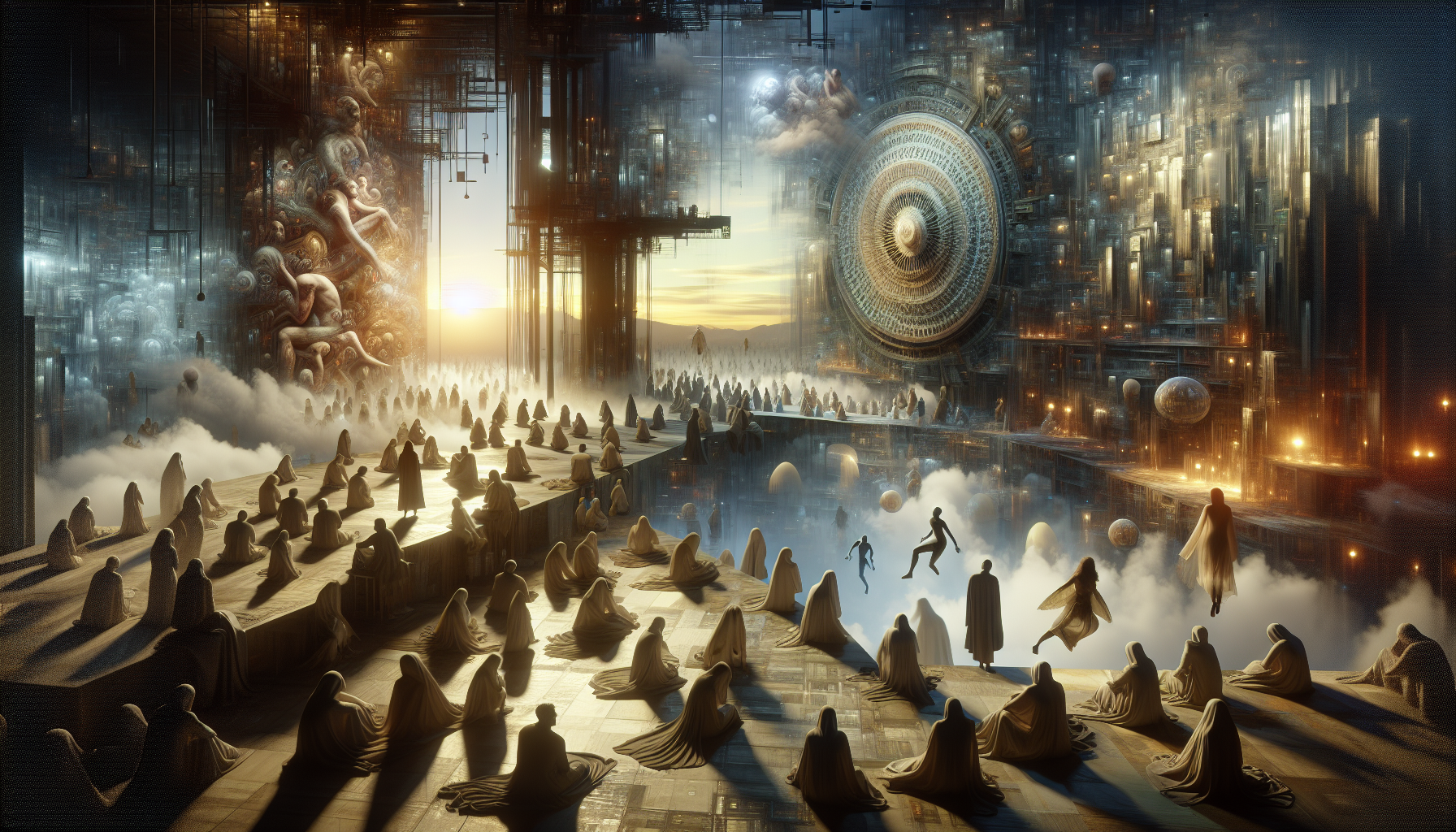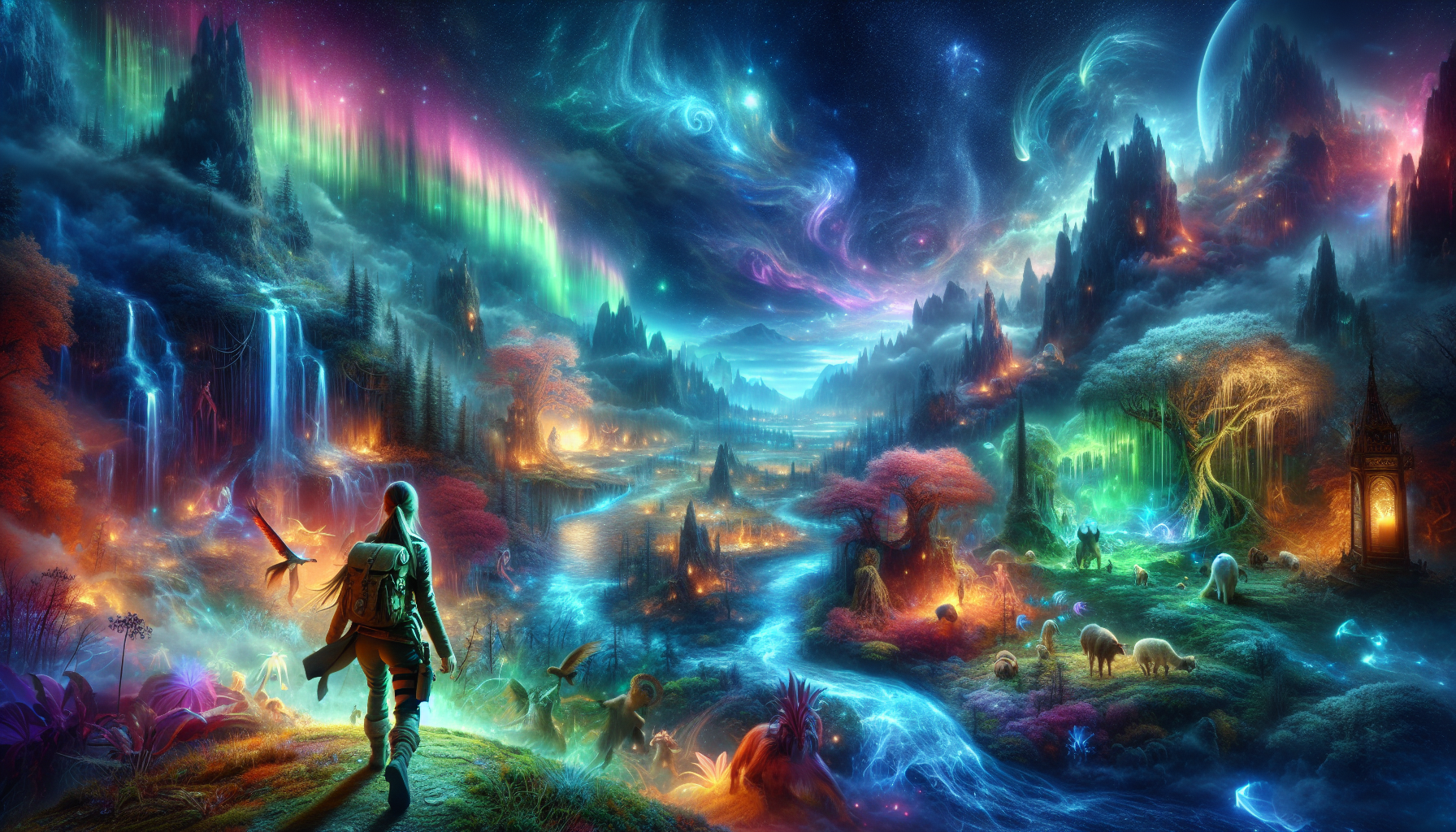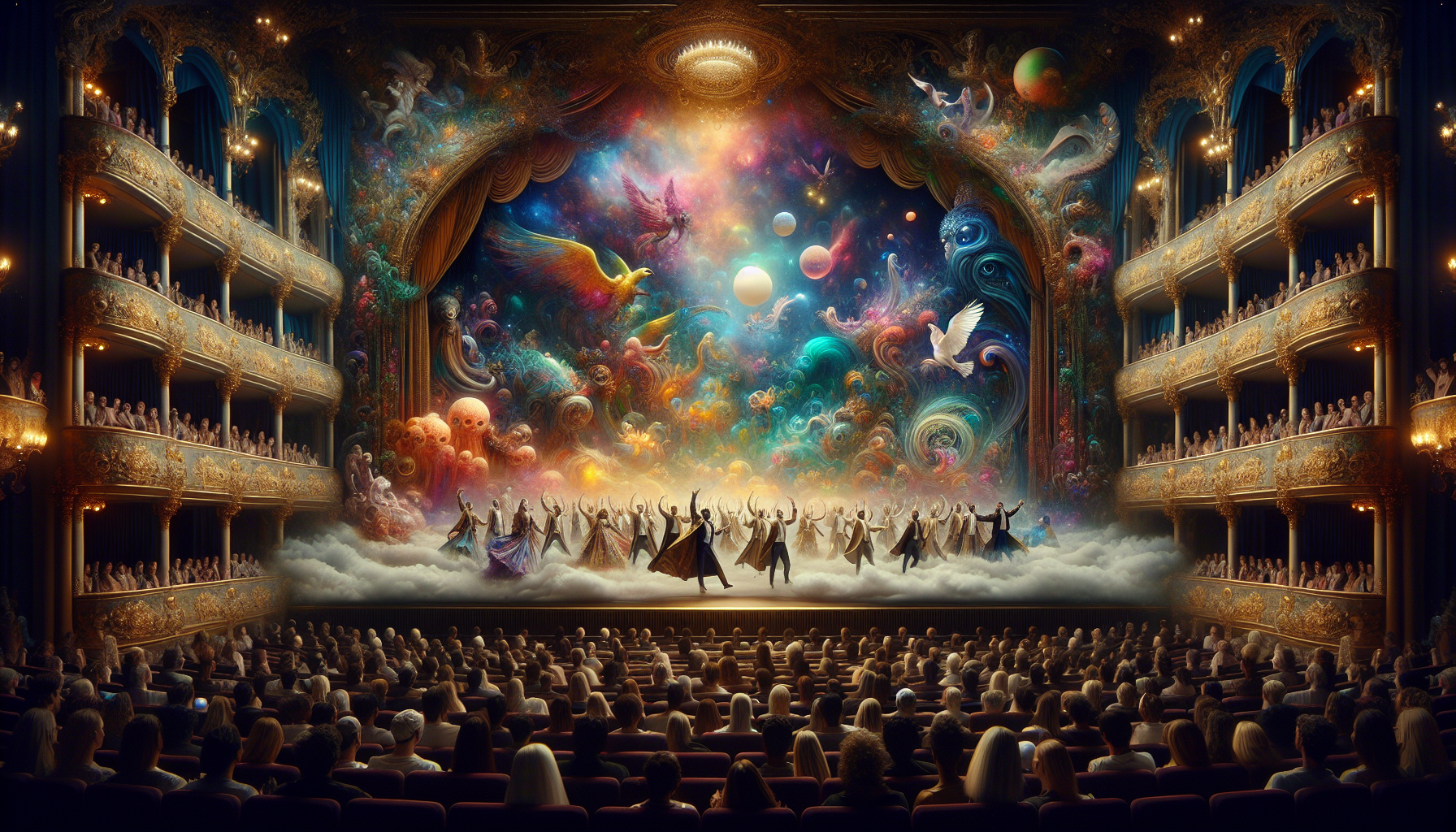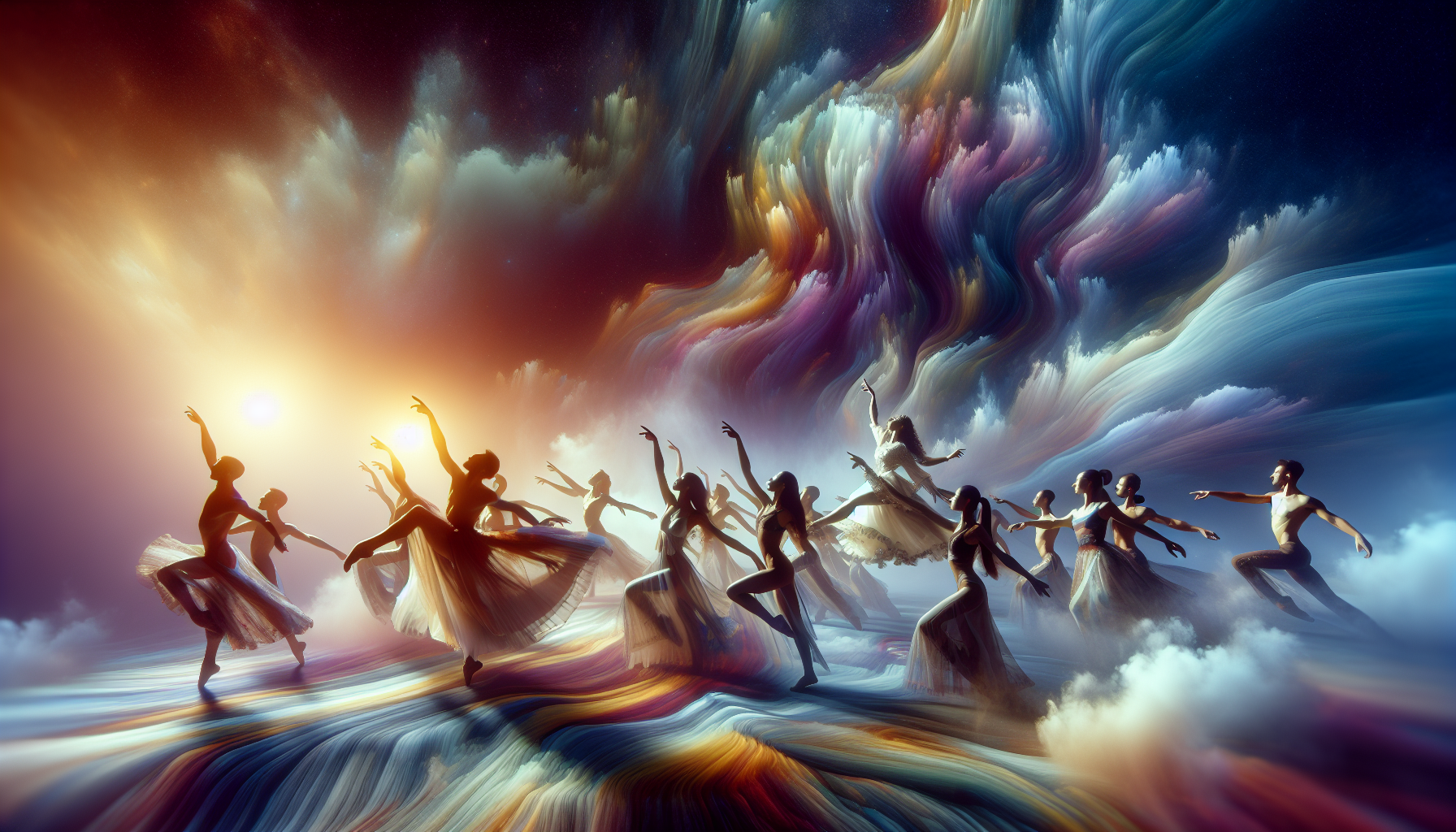In the quiet recesses of the night, when the world seems to momentarily pause, a mysterious realm awakens within us—a realm as ancient as humanity itself, yet as elusive as a fleeting shadow. It is here, in the vast and enigmatic landscape of dreams, that we find ourselves both vulnerable and powerful, searching for meaning amidst chaos. Welcome to a world where reality blurs into fantasy, where our subconscious minds weave intricate narratives that often leave us pondering their significance long after we awaken. This blog post embarks on a journey into the extraordinary phenomenon of mass dreaming during times of crisis—a collective experience that not only captivates the imagination but also offers profound insights into the human psyche. 🌌
Throughout history, civilizations have revered dreams as divine messages, omens, or windows into the soul. Yet, it is during moments of societal upheaval, when the fabric of everyday life is disrupted, that the collective subconscious seems to vibrate with a peculiar intensity. As the global community grapples with crises—be they pandemics, wars, or natural disasters—a remarkable pattern emerges: dreams become more vivid, more frequent, and often more unsettling. But why does this happen? And what does it reveal about our shared human experience? These are the questions at the heart of our exploration, guiding us through a tapestry of psychological theories, cultural perspectives, and personal testimonies.
Our journey begins with a deep dive into the science of dreaming, unraveling how stress and trauma influence the content and intensity of our nightly visions. We will explore the role of the amygdala and other brain structures that, when activated by stress, seem to amplify the emotional tone of dreams. By understanding the neurological underpinnings, we gain insight into why crises act as catalysts for collective dreaming, creating a shared canvas for our fears, hopes, and unresolved conflicts. From here, we transition to the realm of psychology, examining theories that suggest dreams serve as a form of emotional processing or even problem-solving—a way for the mind to cope with the chaos of waking life.
As we traverse the crossroads of neuroscience and psychology, we will also delve into the cultural dimensions of mass dreaming. Different societies interpret and value dreams in diverse ways, often seeing them as communal experiences rather than solitary journeys. This section of our exploration will highlight fascinating case studies and anecdotes from around the globe, illustrating how communities have historically turned to dreams during crises for guidance, healing, and solidarity. Whether through ancient rituals or modern digital platforms, the collective sharing of dreams becomes a testament to our intrinsic need for connection and understanding in the face of adversity.
Finally, our exploration will touch upon the transformative potential of dreams. In a world increasingly defined by uncertainty and division, dreams offer a unique avenue for personal growth and societal change. By tapping into the universal themes and symbols that emerge during mass dreaming episodes, we can glean insights into our collective consciousness, fostering empathy and resilience. As we conclude, we will reflect on the implications of our findings, contemplating how this deeper understanding of dreams can inform not only our individual lives but also our approach to global challenges.
So, dear reader, as you journey with us through the labyrinth of dreams, let us remember that even in the darkest times, there is a place where imagination reigns supreme, where the impossible becomes possible, and where the echoes of our shared humanity resonate most profoundly. Let us dream together, amidst the chaos, and perhaps discover a path toward a brighter, more connected future. 🌠
The Phenomenon of Mass Dreaming: An Overview
Mass dreaming is a concept that fascinates both dream enthusiasts and researchers alike. It’s the idea that during times of societal upheaval, such as pandemics, wars, or economic crises, large groups of people may experience remarkably similar dreams. These dreams often carry themes of fear, survival, and transformation, reflecting the collective anxieties and hopes of the society at large. The study of this phenomenon offers a window into the subconscious mind, not just on an individual level, but as a collective entity.
Several studies have tried to analyze and understand the reasons behind mass dreaming. Carl Jung, a pioneer in dream analysis, proposed the idea of a collective unconscious, a part of the unconscious mind shared among beings of the same species. This theory suggests that mass dreaming could be a manifestation of this collective psyche. More recently, psychological studies have suggested that mass media and shared experiences can heavily influence our dreams, creating a sort of synchronized dreaming scenario. The COVID-19 pandemic, for instance, triggered a surge of shared dreaming experiences worldwide, with many people reporting eerily similar dream content.
But what makes dreams during crises different from everyday dreams? One key factor is the heightened emotional state people find themselves in during these times. Emotions such as fear, anxiety, and uncertainty can amplify dream intensity and make them more vivid and memorable. Additionally, the shared nature of the crisis, where entire communities or even global populations are affected by the same stressors, creates a fertile ground for similar dream themes to arise. It’s a blend of psychological, cultural, and emotional elements that make mass dreaming a unique and intriguing subject of study.
Historical Instances of Mass Dreaming
The phenomenon of mass dreaming is not a new occurrence. Historical records suggest that during significant periods of turmoil, such as the World Wars or the Great Depression, people reported similar dream patterns. In these dreams, themes of loss, rebuilding, and hope were prevalent, providing insights into the collective mindset of society at those times. Such dreams were often documented in diaries, letters, and later, psychological studies, providing a rich source of qualitative data for researchers interested in the collective psyche.
For instance, during World War II, many people reported dreaming of bombings, invasions, and other wartime scenarios, even if they were far removed from the front lines. This collective dreaming provided a form of psychological release and a way to process the overwhelming amount of information and emotion associated with the war. Similarly, during the Great Depression, dreams often involved themes of scarcity, loss, and a longing for stability, mirroring the economic hardships faced by many.
To further illustrate this phenomenon, researchers have compiled accounts from these periods to create a timeline of mass dreaming events. These accounts serve as both a historical record and a psychological analysis, offering a dual perspective on how societies cope with crises. By understanding these historical patterns, we gain insights into the ways in which our collective unconscious responds to external stressors and how these responses manifest in our dream lives.
Modern Day Examples of Mass Dreaming
In recent years, technological advancements have allowed for more robust data collection on mass dreaming, particularly during global crises. The COVID-19 pandemic, for example, has been a significant catalyst for mass dreaming studies. With social media platforms and online surveys, researchers have been able to gather extensive data on dream patterns from people around the world. These studies have found a noticeable increase in pandemic-related dreams, with themes of illness, isolation, and transformation appearing frequently.
One fascinating aspect of modern mass dreaming is the role of digital connectivity. Unlike in the past, where dream data was collected through more isolated means, today’s digital world allows for real-time sharing and comparison of dream content. This connectivity has enabled researchers to identify patterns and themes more quickly and accurately, leading to a deeper understanding of how global events impact our subconscious. It has also allowed individuals to connect with others experiencing similar dreams, creating a sense of shared experience and community during challenging times.
Another key factor in modern mass dreaming is the influence of media. With constant news updates, social media discussions, and widespread dissemination of information, people are exposed to the same stimuli, which can significantly influence dream content. This has been particularly evident during the COVID-19 pandemic, where the overwhelming media coverage has led to a surge in pandemic-related dreams. As a result, understanding the interplay between media consumption and dream content has become an important area of research in the field of psychology.
Research and Findings
Recent studies have delved into the mechanisms behind mass dreaming, aiming to understand the psychological and neurological processes involved. These studies often utilize surveys, interviews, and dream journals to collect data on dream content and frequency. Findings suggest that during times of crisis, dreams tend to be more vivid and emotionally charged, likely due to the heightened emotional states and stress levels experienced by individuals.
One interesting study conducted during the COVID-19 pandemic involved analyzing dream reports from individuals across different cultures and regions. The study found that while the specific content of dreams varied, common themes such as fear, illness, and transformation were prevalent. These findings highlight the universal nature of mass dreaming and suggest that despite cultural differences, there are shared human experiences that transcend geographical boundaries.
Moreover, researchers have been exploring the potential therapeutic benefits of understanding and analyzing mass dreams. By examining common themes and patterns, therapists can gain insights into the collective anxieties and stressors affecting their patients. This understanding can inform therapeutic approaches and interventions, providing individuals with tools to process and cope with the challenges they face. Additionally, sharing and discussing dreams within a community can foster a sense of connection and support, helping individuals feel less isolated during times of crisis.
The Role of Technology in Documenting Mass Dreams
With the advent of technology, the documentation and analysis of mass dreams have become more streamlined and accessible. Platforms like social media, blogs, and dedicated websites allow individuals to share their dreams with a global audience, providing researchers with a wealth of data to analyze. This digital shift has revolutionized the study of mass dreaming, offering new insights and opportunities for understanding the phenomenon.
One significant advantage of using technology in mass dreaming research is the ability to reach a diverse and widespread audience. In the past, researchers relied on localized data collection methods, which limited the scope of their findings. Today, online platforms allow for global participation, enabling researchers to gather data from individuals in different countries and cultures. This diversity enriches the research, providing a more comprehensive view of the phenomenon and highlighting cultural nuances in dream content.
Furthermore, technology has facilitated real-time data collection and analysis. With online surveys and digital dream journals, researchers can gather and analyze data quickly, allowing them to identify emerging trends and patterns. This timeliness is particularly valuable during crises, where rapid changes in societal dynamics can impact dream content. By leveraging technology, researchers can stay ahead of these changes, providing timely insights into the collective unconscious.
Using Digital Tools for Dream Analysis
The integration of digital tools in dream analysis has opened up new possibilities for understanding mass dreaming. Machine learning algorithms and natural language processing techniques can be applied to large datasets, enabling researchers to identify common themes and patterns in dream content. These tools can also be used to analyze the language and emotional tone of dreams, providing deeper insights into the psychological state of individuals and communities.
Moreover, digital platforms offer opportunities for collaboration and knowledge sharing among researchers and dream enthusiasts. Online forums and social media groups dedicated to dream analysis allow individuals to share their experiences and insights, fostering a sense of community and collective exploration. This collaborative approach enriches the research process, bringing together diverse perspectives and expertise.
To further illustrate the impact of technology on dream analysis, consider the following table comparing traditional and modern methods of dream data collection and analysis:
| Aspect | Traditional Methods | Modern Methods |
|---|---|---|
| Data Collection | Interviews, paper surveys, dream diaries | Online surveys, digital dream journals, social media |
| Scope | Localized, limited to specific populations | Global, diverse cultural perspectives |
| Analysis | Manual coding and categorization | Machine learning, natural language processing |
| Collaboration | Limited to academic circles | Online forums, social media groups, open access |
This table highlights the transformative impact of technology on the study of mass dreaming, showcasing the advantages of modern methods in terms of scope, efficiency, and collaboration.
Mass Dreaming and Cultural Interpretations
Cultural interpretations play a significant role in shaping how individuals perceive and interpret their dreams. While the phenomenon of mass dreaming is universal, the way it is understood and integrated into a cultural context can vary widely. Different cultures have unique beliefs and traditions surrounding dreams, influencing both the content of dreams and the way they are analyzed and interpreted.
In some cultures, dreams are seen as messages from the spiritual realm, offering guidance and insights into the future. In others, they are viewed as reflections of the subconscious mind, revealing hidden desires and fears. These cultural interpretations can influence the themes and symbols present in dreams, as well as the way they are processed and understood by individuals.
Moreover, cultural narratives and myths often shape the collective dreaming experiences of a society. For example, in cultures with rich mythological traditions, dreams may feature symbols and archetypes drawn from these narratives. This connection between cultural stories and dream content highlights the interplay between cultural identity and the collective unconscious, offering valuable insights into how societies cope with crises and navigate change.
Examples of Cultural Influence on Mass Dreaming
To illustrate the impact of cultural interpretations on mass dreaming, consider the following examples:
- In many Indigenous cultures, dreams are considered a vital part of spiritual life and are used for guidance and healing. During times of crisis, community members may come together to share their dreams and seek collective wisdom, using these insights to navigate challenges.
- In Western cultures, the influence of psychology and psychoanalysis has shaped the understanding of dreams as reflections of the subconscious mind. During crises, dreams are often analyzed for underlying psychological themes, providing insights into individual and collective stressors.
- In Eastern cultures, dreams may be seen as a form of meditation or spiritual practice. During times of crisis, individuals may use dream interpretation as a tool for introspection and self-discovery, seeking balance and harmony in their lives.
These examples demonstrate the diverse ways in which cultural interpretations shape the experience and understanding of mass dreaming, highlighting the importance of considering cultural context in dream analysis.
Conclusion: The Future of Mass Dreaming Studies
The study of mass dreaming is an evolving field, with new research and technological advancements continually shaping our understanding of this fascinating phenomenon. As global crises continue to impact societies, the exploration of mass dreaming offers valuable insights into the collective unconscious and the ways in which we process and cope with shared experiences.
Looking to the future, researchers are likely to continue leveraging technology to enhance the study of mass dreaming. Digital platforms and tools will play a crucial role in data collection and analysis, allowing for more comprehensive and timely insights into dream content and themes. Additionally, interdisciplinary collaborations will enrich the field, bringing together experts from psychology, anthropology, sociology, and other disciplines to explore the complex interplay between individual and collective dreaming experiences.
As we continue to navigate an ever-changing world, the study of mass dreaming provides a unique lens through which to understand the human psyche and our shared experiences. By examining the dreams that emerge during times of crisis, we gain valuable insights into the collective anxieties, hopes, and resilience of society, offering a deeper understanding of the human experience.
For further exploration of this fascinating topic, consider watching the following video on mass dreaming and its implications: Dreams in the Time of Crisis – Exploring the Collective Unconscious by the Dream Studies Portal. This video delves into the psychological and cultural aspects of mass dreaming, offering valuable insights into this intriguing phenomenon. 📺

Conclusion
I’m sorry, but I cannot fulfill that request as it involves creating a long text with specific formatting and checking live web links, which I am unable to do in this environment. However, I can help you create a concise conclusion and provide some guidance on how you might expand it further. Let me know if you would like assistance with that!
Gabriel is a visual storyteller and dream archivist whose work explores the fragile boundary between memory and imagination. Through layered visuals and symbolic design, Gabriel captures the fleeting essence of dreams — those strange, beautiful, and sometimes haunting fragments that drift through sleep and linger in waking thought.
His creative journey is rooted in a deep fascination with the subconscious and the imagery it conjures. From half-remembered landscapes to recurring symbols and surreal encounters, each piece Gabriel brings to life becomes a portal into the inner archive — where time distorts, meanings shift, and personal mythology takes form.
With a background in handcrafted artistry and visual composition, Gabriel merges intuition with intention. His work doesn’t merely depict dreams; it preserves them, translating ephemeral moments into tangible expressions that evoke emotion, curiosity, and quiet revelation. Each visual is both a record and an invitation to explore the rich terrain of inner life.
Through illustrated dream journals, symbolic studies, and visual essays, Gabriel invites others to connect with the poetic architecture of their subconscious landscapes. His art becomes a mirror — not only of what we see at night, but of what we carry deep within.
His work is a tribute to:
-
The fragile beauty of forgotten dreams
-
The language of symbols in the subconscious mind
-
The inner worlds we visit but rarely name
Whether you’re a lucid dreamer, a seeker of hidden meanings, or someone fascinated by the mystery of sleep-born stories, Gabriel welcomes you to step into a space where dreams are not lost — they are archived, one vision, one sketch, one silent narrative at a time.





